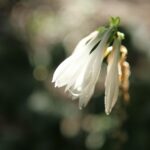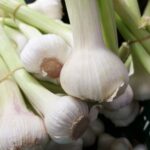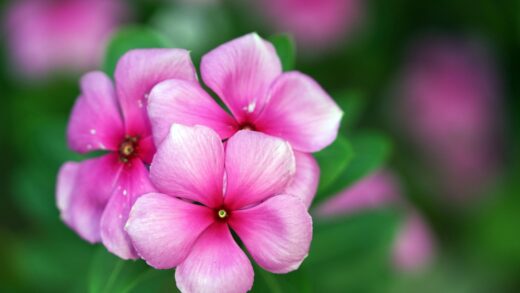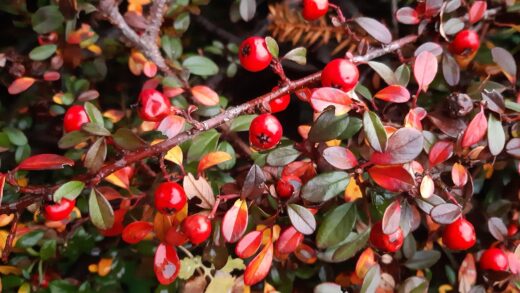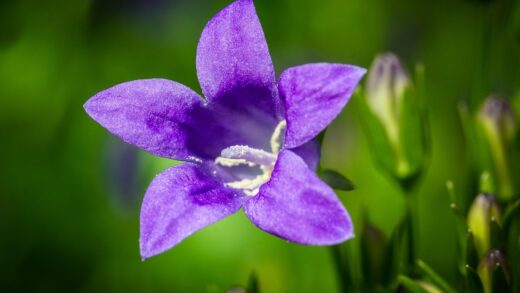Understanding the specific water requirements of lily of the valley is fundamental to cultivating a healthy, thriving patch of this enchanting woodland plant. Native to forest floors, it is evolutionarily adapted to environments where the soil remains consistently moist but is not waterlogged. The primary goal of any irrigation strategy should be to replicate these conditions, providing a steady supply of moisture to the plant’s shallow rhizomatous root system. Failing to meet these water needs is one of the most common reasons for the plant’s failure to establish or perform well, leading to poor growth and a lack of its signature fragrant blooms.
Effective irrigation is about more than just the quantity of water provided; it also involves the timing and method of application. The plant’s water needs fluctuate throughout the year, peaking during its active growth phase in the spring and diminishing as it enters dormancy in the autumn. A responsive watering regimen that adapts to these changing needs, as well as to local weather patterns and soil conditions, will yield the best results. Overwatering can be just as detrimental as underwatering, creating an environment ripe for fungal diseases and root rot.
The relationship between water, soil, and the plant itself is a delicate balance. The structure and composition of the soil play a critical role in how water is absorbed, retained, and made available to the roots. By optimizing the soil with organic matter and employing techniques like mulching, a gardener can create a more resilient and water-efficient environment for the lily of the valley to grow. This holistic approach to moisture management reduces the burden of frequent watering and promotes a more sustainable garden ecosystem.
Ultimately, careful observation is a gardener’s most valuable tool in managing the water needs of lily of the valley. The plant itself will often provide visual cues when it is experiencing moisture stress. Learning to recognize these signs, combined with the physical act of checking the soil’s dampness, allows for precise and effective irrigation. This attentive approach ensures the plants receive the hydration they need to produce their beautiful foliage and iconic, perfumed flowers year after year.
The essence of consistent moisture
The most critical concept to grasp when watering lily of the valley is the need for consistent moisture. This plant does not tolerate a cycle of extreme drying out followed by heavy soaking. Its shallow root system is not equipped to seek out water from deep within the soil profile, making it reliant on the moisture present in the upper layers of the soil. The ideal condition is a soil that feels damp to the touch, much like a well-wrung sponge.
More articles on this topic
This requirement for steady moisture is directly linked to its natural habitat on the forest floor. In such an environment, the canopy of trees shades the ground, reducing evaporation, while a constant layer of decomposing leaves acts as a natural mulch, holding in moisture. When cultivating this plant in a garden setting, the aim is to recreate this stable, moist environment. This is especially important during the spring when the plant is actively growing and producing flowers, as this is when its water demand is at its highest.
Achieving this consistency requires a proactive approach to watering rather than a reactive one. Waiting until the plants show visible signs of wilting before watering can cause stress and damage the foliage. It is far better to establish a regular watering schedule that is adjusted based on rainfall and temperature. Checking the soil with your finger every few days is the most reliable method; if the top inch feels dry, it is time to water.
The consequence of failing to maintain this consistent moisture is often seen in the plant’s appearance. The leaves may develop brown, crispy edges, and the overall growth can become stunted. In severe cases of drought, the plant may prematurely enter dormancy, with the foliage dying back early in the summer. This not only ruins the aesthetic for the current season but also hampers the plant’s ability to store sufficient energy for the following year’s growth.
Effective irrigation techniques
The method by which water is delivered to lily of the valley is just as important as the frequency. The best practice is to apply water directly to the soil at the base of the plants, thoroughly soaking the root zone while keeping the foliage as dry as possible. This technique ensures that the water reaches the rhizomes where it is needed and minimizes the risk of creating a humid environment around the leaves, which can encourage fungal diseases.
More articles on this topic
Drip irrigation or the use of soaker hoses are highly effective and efficient methods for watering a bed of lily of the valley. These systems deliver water slowly and directly to the soil, allowing it to be absorbed deeply without significant runoff or evaporation. They are a particularly good choice for established colonies, as the hoses can be wound through the plants and left in place for the entire growing season, making watering a simple and precise task.
If you are watering by hand with a hose or watering can, use a gentle setting or a breaker nozzle to avoid dislodging the soil or damaging the plants. Water slowly and allow it to soak in before moving to the next section. The goal is to water deeply and less frequently, rather than lightly and often. A deep watering encourages the roots to grow more extensively into the soil, creating a more resilient and drought-tolerant plant.
The timing of watering is another key consideration. It is always best to water plants in the early morning. This gives the plants the moisture they need to handle the heat and stress of the day. Furthermore, any water that splashes onto the leaves has ample time to evaporate in the morning sun, reducing the risk of disease. Watering in the late evening is less ideal, as the foliage may remain wet overnight, creating a perfect breeding ground for fungal pathogens like leaf spot.
Watering through the seasons
The water needs of lily of the valley are not static; they change significantly with the seasons, following the plant’s natural growth cycle. In the spring, during its most active phase of growth and flowering, the plant’s demand for water is at its peak. It is crucial to monitor soil moisture closely during this period and provide supplemental irrigation whenever rainfall is insufficient to keep the soil consistently damp. This ensures the development of strong leaves and a beautiful display of flowers.
As summer arrives and the flowering period ends, the plant’s water requirements remain relatively high. The foliage continues to photosynthesize, storing energy in the rhizomes for the following year. Although the plant may be more shaded by the full canopy of deciduous trees, hot and dry summer weather can quickly deplete soil moisture. Continuing a regular watering schedule through the summer is essential to prevent the foliage from yellowing and dying back prematurely due to drought stress.
When autumn approaches, the plant begins to prepare for dormancy, and its water needs naturally decrease. The leaves will start to yellow and wither as nutrients are drawn back into the rhizomes. You can gradually reduce the frequency of watering during this time, allowing the soil to dry out slightly more between waterings. Continuing to overwater as the plant enters dormancy can increase the risk of the rhizomes rotting during the wet winter months.
During the winter, an established and dormant lily of the valley patch typically requires no supplemental irrigation. The winter rains and snowmelt in most climates will provide sufficient moisture to keep the rhizomes hydrated. The primary concern in winter is not a lack of water, but rather an excess of it in poorly drained soils. This is why ensuring good drainage during the initial soil preparation phase is so vitally important for the plant’s long-term survival.
Recognizing signs of water stress
One of the most valuable skills in caring for lily of the valley is the ability to recognize the signs of both overwatering and underwatering. The plant provides clear visual cues when it is experiencing water-related stress. For an underwatered plant, the first sign is often a slight wilting or drooping of the leaves, particularly during the hottest part of the day. If the dry conditions persist, the edges of the leaves will begin to turn brown and crispy.
Further signs of insufficient water include stunted growth, a sparse and weak appearance, and a failure to produce flower stalks in the spring. In prolonged periods of drought, the plant may activate a survival mechanism and enter dormancy prematurely, with all of its foliage dying back to the ground. While this may preserve the rhizome for the next season, it means the loss of the plant’s aesthetic contribution to the garden for the remainder of the current year.
Conversely, overwatering can be even more damaging than underwatering. The most common symptom of excessive moisture is the yellowing of the leaves, starting with the lower ones. This occurs because the waterlogged soil deprives the roots of oxygen, leading to root rot. The plant may appear wilted, which can be confusingly similar to the signs of underwatering, but the soil will be saturated to the touch. A lack of vigor and a general look of sickness are also indicative of too much water.
To definitively diagnose the issue, always check the soil before taking corrective action. Push your finger a couple of inches into the soil near the base of the plants. If it feels bone dry, underwatering is the problem. If it feels soggy, muddy, or has a sour smell, overwatering and poor drainage are the likely culprits. Adjusting your watering practices based on this direct feedback from the soil is the key to resolving the issue and restoring the health of your plants.
The role of soil and mulch
The composition of the soil and the use of mulch are inextricably linked to the water requirements and irrigation strategy for lily of the valley. The ideal soil for this plant is one that excels at retaining moisture while still allowing excess water to drain away freely. A soil that is rich in organic matter, such as compost or leaf mould, has the perfect structure for this. The organic particles act like tiny sponges, absorbing and holding onto water, making it available to the plant’s roots over a longer period.
Before planting, amending the native soil with several inches of compost is the most effective way to improve its water-holding capacity. This single step can dramatically reduce the frequency with which you need to provide supplemental irrigation. For existing patches, an annual top dressing of compost in the spring will continue to enrich the soil and improve its moisture-retentive qualities over time. This creates a more resilient and self-sustaining environment for the plants.
Applying a layer of organic mulch on the soil surface around the plants is another essential component of effective water management. A one to two-inch layer of materials like shredded bark, wood chips, or shredded leaves serves several important functions. Primarily, it acts as a barrier, slowing the evaporation of water from the soil surface, which keeps the soil cooler and moister for longer. This is particularly beneficial during hot and windy weather.
In addition to conserving moisture, mulch also helps to suppress weed growth. Weeds compete directly with the lily of the valley for available water and nutrients, so controlling them is an important part of ensuring your plants have the resources they need. As the organic mulch slowly decomposes, it also adds to the nutrient content and structure of the soil, further enhancing its ability to manage water effectively. This integrated approach of improving the soil and using mulch creates the ideal foundation for a healthy, well-hydrated colony.











